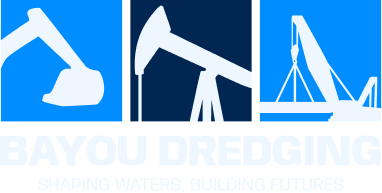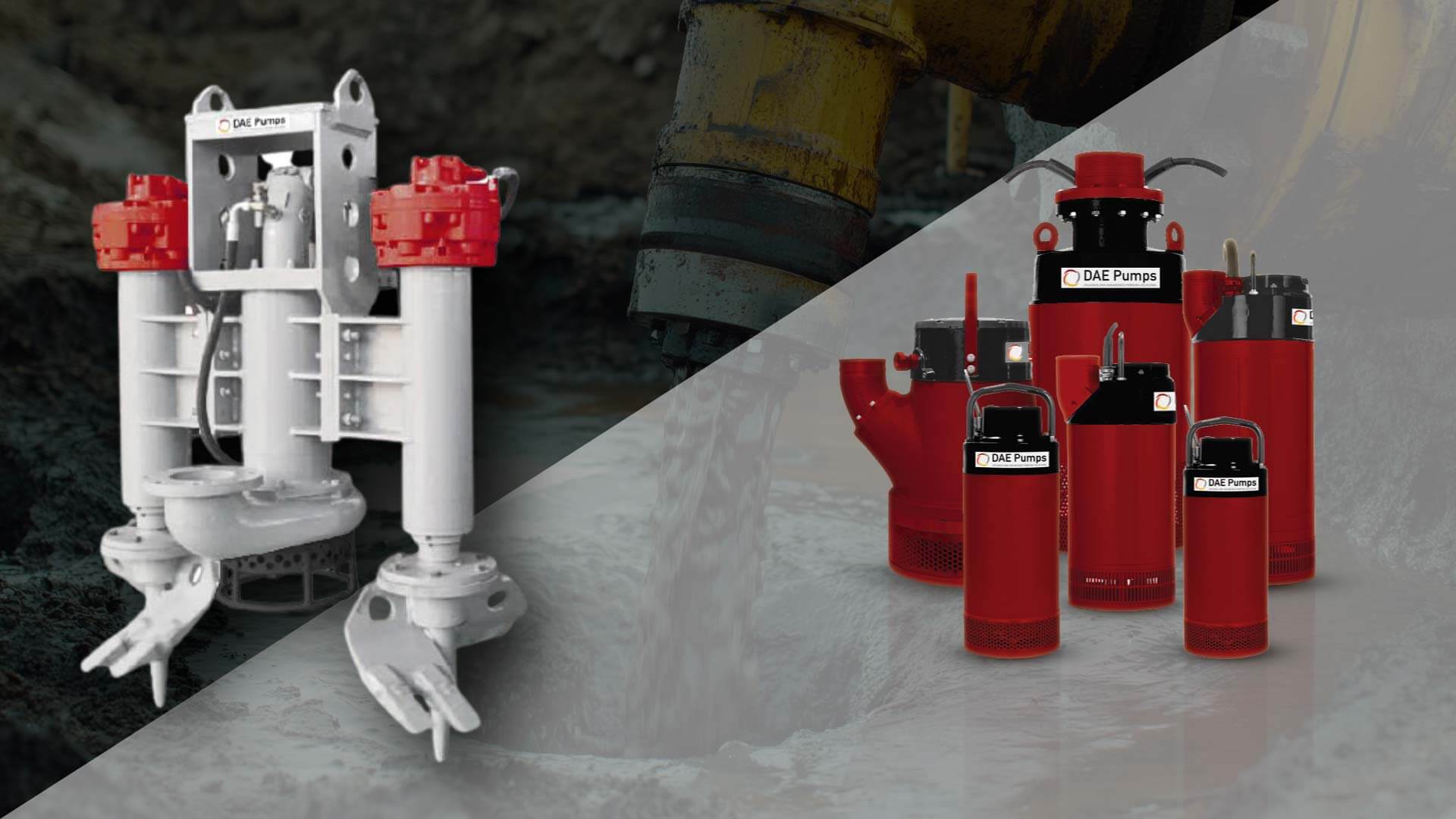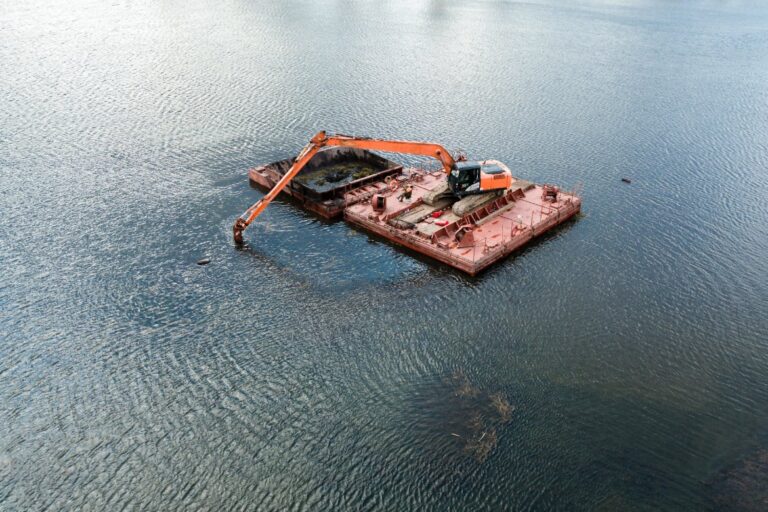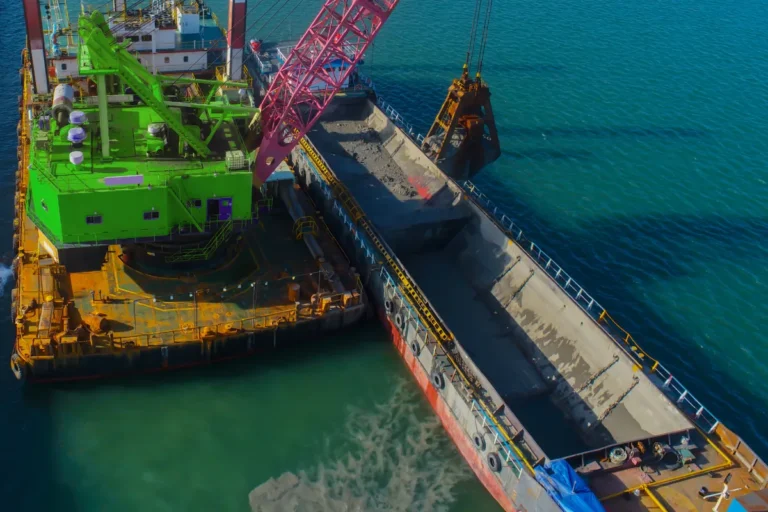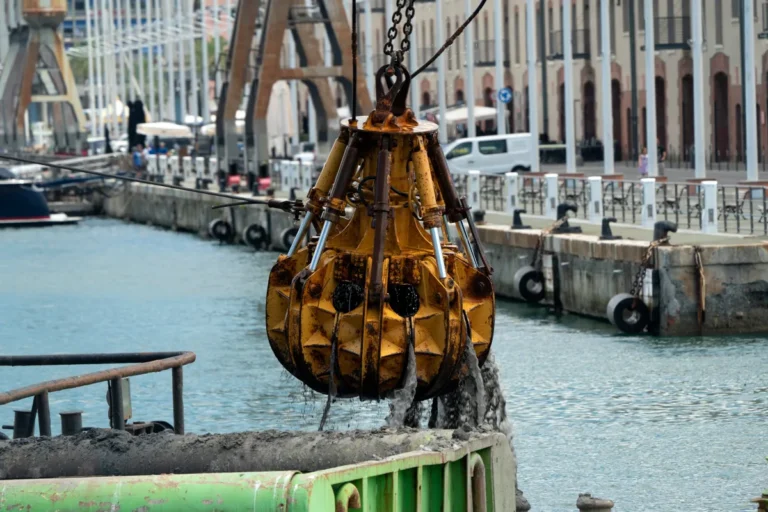Submersible dredge pumps are critical in dredging operations across various industries, including mining, construction, and environmental remediation. These powerful pumps are designed to operate underwater and directly handle abrasive materials such as sand, sludge, and slurry. Their ability to efficiently move large volumes of sediment and debris makes them essential for maintaining waterways, deepening harbors, and managing tailings in mining operations.
As industries face increasing pressure to improve efficiency and reduce operational costs, the demand for reliable and high-performance dredging solutions has grown significantly. Whether it’s clearing silt from a riverbed, managing wastewater at an industrial site, or extracting valuable minerals from mining operations, submersible dredge pumps provide a versatile and effective solution. Their ability to handle high concentrations of solids with minimal clogging makes them indispensable for handling challenging dredging projects.
One key decision when selecting a submersible dredge pump is whether to choose a hydraulic or electric model. Both types offer distinct advantages depending on the project’s requirements, environmental conditions, and operational constraints. Hydraulic submersible dredge pumps are known for their high power and ability to operate at greater depths, making them ideal for remote and deep-water projects. Electric submersible dredge pumps are valued for their simplicity, lower initial costs, and suitability for controlled environments.
This article will provide a detailed comparison of hydraulic and electric submersible dredge pumps, exploring their advantages, limitations, and best applications. By understanding the differences, you can make an informed decision and select the most effective dredging solution for your specific needs.
What Are Submersible Dredge Pumps?
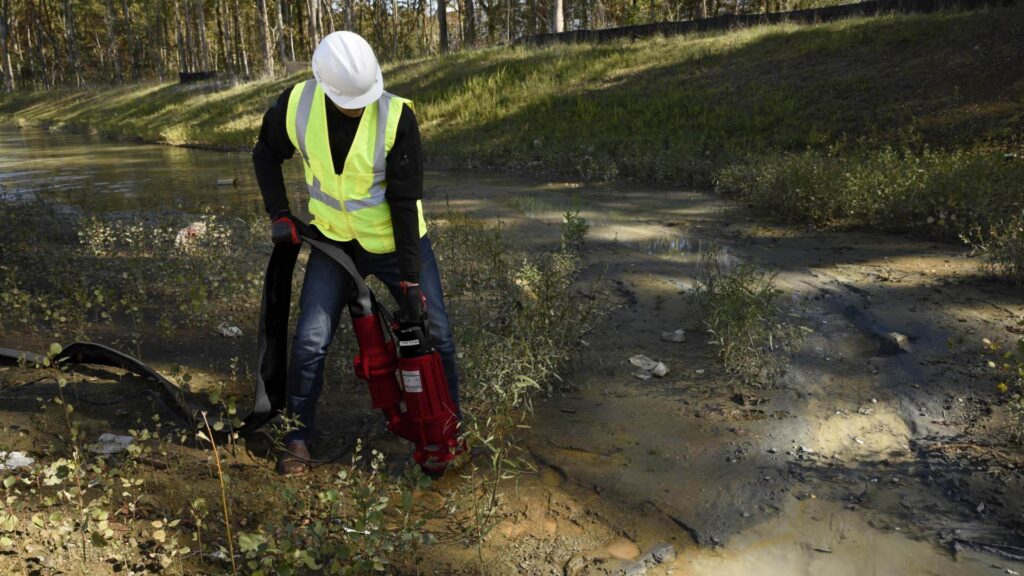
Submersible dredge pumps are specialized pumps designed to operate underwater, making them essential for demanding dredging operations. Unlike traditional pumps that sit above the waterline, submersible dredge pumps are fully submerged in the material they are pumping. This allows them to efficiently handle high concentrations of solids such as sand, sludge, and slurry. Their ability to operate directly at the source of the material makes them highly effective for projects that require the removal or transfer of large volumes of sediment and debris.
Submersible dredge pumps are used to move abrasive and dense materials from one location to another. They are widely used in a range of industries, including mining, construction, and environmental remediation. In mining operations, these pumps help extract valuable materials and manage tailings. In construction, they deepen waterways, maintain ports, and prevent flooding. In environmental projects, they remove contaminated sediments and restore ecosystems.
How Submersible Slurry Pumps Work
Submersible slurry pumps operate using a combination of an impeller and a casing designed to withstand abrasive and corrosive materials. The impeller, which is typically made from hardened metal or other wear-resistant materials, generates a powerful centrifugal force that creates suction, allowing the pump to draw in and discharge slurry or sediment.
Once the material is drawn in, it passes through the casing, which is engineered to resist wear and damage from abrasive particles. The slurry is then discharged through the pump’s outlet and transported to the desired location through pipelines or hoses.
Material construction is critical for the performance and longevity of submersible slurry pumps. High-chrome alloys, rubber linings, and other corrosion-resistant materials are often used to protect the pump from damage caused by abrasive and corrosive materials. This makes submersible dredge pumps highly durable, even in harsh environments where other types of pumps may fail.
Hydraulic submersible dredge pumps, in particular, are known for their ability to handle dense and abrasive slurry at high depths and pressures. The hydraulic motor provides the power needed to operate the pump in remote or deep-water locations where electrical power may not be available. Electric submersible dredge pumps, on the other hand, are valued for their simplicity and ease of use in controlled environments.
Submersible dredge pumps combine durable construction with powerful performance, offering an effective solution for challenging dredging operations in rivers, lakes, harbors, and mining sites.
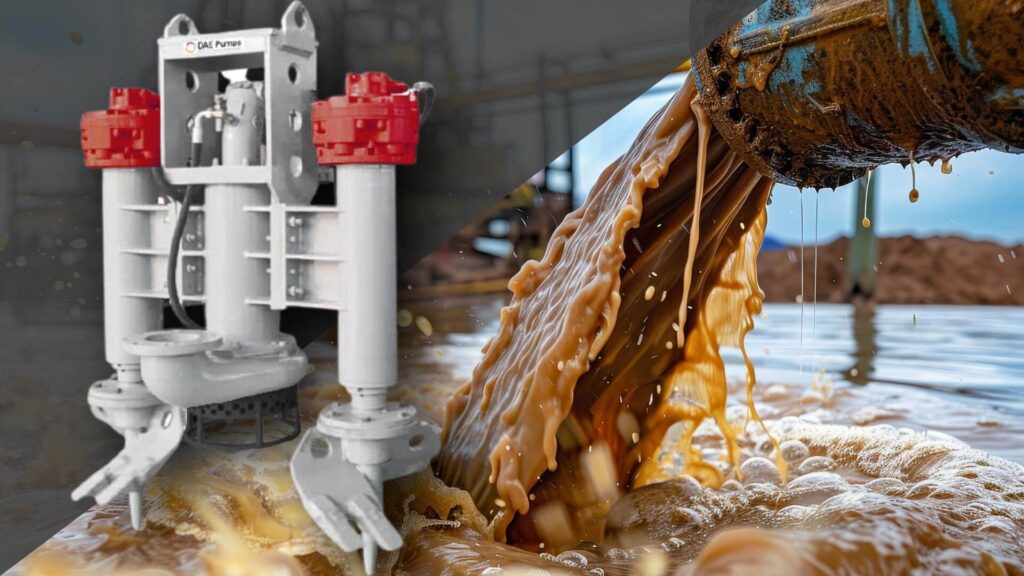
Overview of Hydraulic Submersible Dredge Pumps
Hydraulic submersible dredge pumps are a powerful and versatile solution for demanding dredging operations, especially in deep water and remote locations. These pumps are designed to handle high concentrations of solids, including sand, sludge, and slurry, with remarkable efficiency. Unlike electric submersible dredge pumps, which rely on a direct electrical power source, hydraulic submersible dredge pumps are powered by a hydraulic power unit (HPU), making them highly effective in challenging and isolated environments.
How Hydraulic Submersible Dredge Pumps Work
Hydraulic submersible dredge pumps are powered by a hydraulic power unit that supplies pressurized hydraulic fluid to the pump motor. The hydraulic fluid transmits power to the pump’s motor, driving the impeller and creating the suction needed to lift and transport abrasive materials.
The ability to operate using hydraulic power makes these pumps ideal for deep-water dredging and operations in locations where electrical power is unavailable or impractical. The hydraulic system allows for greater control over the pump’s speed and pressure, making it easier to adjust the pump’s performance based on the type of material being handled.
Hydraulic submersible dredge pumps are commonly used in mining, construction, and environmental projects where high solids content and difficult terrain require robust and flexible pumping solutions. Their design allows them to withstand harsh working conditions and deliver consistent performance even when pumping highly abrasive and dense materials.
Advantages of Hydraulic Submersible Dredge Pumps
- High Power-to-Weight Ratio
Hydraulic submersible dredge pumps deliver more power relative to their size and weight than electric pumps. This makes them easier to transport and install while maintaining a high output capacity. - More Effective for Handling Dense and Abrasive Materials
Hydraulic submersible dredge pumps are specifically designed to handle heavy and abrasive slurry, including sand, gravel, and sediment. The hydraulic motor provides the necessary torque to move high-density materials efficiently. - Capable of Operating at Greater Depths
Since hydraulic systems are less affected by pressure and depth than electrical systems, hydraulic submersible dredge pumps can operate at greater depths without a significant loss of performance. This makes them ideal for deep-water dredging projects. - No Reliance on Electrical Power
Hydraulic submersible dredge pumps do not require an electrical power source, making them suitable for remote or hazardous locations with limited or unsafe electrical infrastructure. They can be powered by portable hydraulic power units, increasing their flexibility and range of applications.
Limitations of Hydraulic Submersible Dredge Pumps
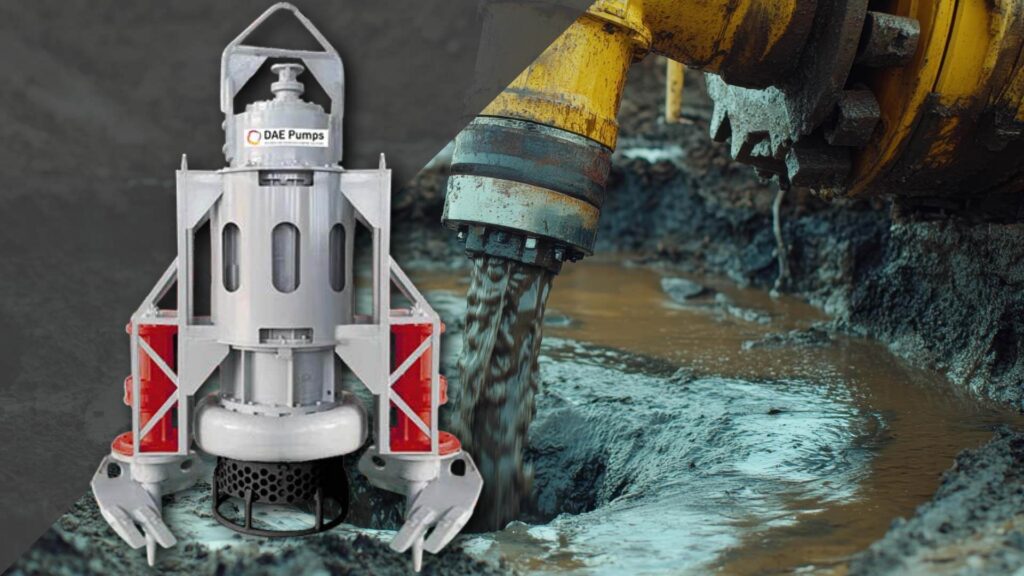
- Requires a Separate Hydraulic Power Unit
Unlike electric submersible dredge pumps, which connect directly to a power source, hydraulic pumps require a separate hydraulic power unit (HPU) to operate. This increases the complexity of the setup and may require additional space and infrastructure. - Higher Initial Setup Cost
The cost of a hydraulic submersible dredge pump and its associated hydraulic power unit is typically higher than that of an electric pump. However, the increased power and capability often justify the investment for large-scale and demanding projects. - Maintenance of Hydraulic Systems Can Be Complex
Hydraulic systems require regular maintenance to ensure optimal performance. This includes monitoring hydraulic fluid levels, checking for leaks, and ensuring that the hydraulic lines and connections remain in good condition. Failure to maintain the system properly can lead to performance issues and increased downtime.
Overview of Electric Submersible Dredge Pumps
Electric submersible dredge pumps are widely used in dredging operations where consistent and predictable performance is required. Unlike hydraulic submersible dredge pumps, which rely on hydraulic power, electric submersible dredge pumps are powered by electric motors connected to a direct electrical power source. These pumps are ideal for shallow water dredging and controlled environments where electrical infrastructure is readily available. Their simplicity, lower cost, and ease of operation make them a popular choice for a variety of dredging applications, including industrial wastewater treatment, environmental remediation, and construction projects.
Electric submersible dredge pumps are highly effective at moving sediment, sand, and slurry in relatively low-depth settings. Their compact design and straightforward setup make them an attractive option for projects that require fast deployment and minimal maintenance. However, they are limited by the availability of electrical power and may struggle to handle the heavy loads and high pressures that hydraulic submersible dredge pumps are built to manage.
How Electric Submersible Dredge Pumps Work
Electric submersible dredge pumps are powered by electric motors that convert electrical energy into mechanical energy. The motor drives the pump’s impeller to create suction. The impeller generates a centrifugal force, which draws in the slurry or sediment and moves it through the pump’s casing before discharging it through an outlet pipe.
These pumps are designed to be submerged directly into the material being pumped, allowing them to operate efficiently without priming. Their performance is closely tied to the available electrical power and the pump’s motor capacity.
Electric submersible dredge pumps are most effective in shallow water and controlled environments where consistent electrical power is available. They are commonly used in industrial plants, wastewater treatment facilities, and construction sites where the material being dredged is less dense and abrasive compared to more demanding offshore or mining projects.
Advantages of Electric Submersible Dredge Pumps
- Simple to Install and Operate
Electric submersible dredge pumps are relatively easy to set up, requiring only a connection to a power source and minimal configuration. Their plug-and-play design makes them user-friendly and ideal for smaller-scale or short-term projects. - Lower Initial Investment Compared to Hydraulic Pumps
The upfront cost of an electric submersible dredge pump is generally lower than that of a hydraulic submersible dredge pump. Thus, electric pumps provide a cost-effective solution for projects with limited budgets or less demanding performance requirements. - Ideal for Consistent and Predictable Dredging Projects
Electric submersible dredge pumps deliver consistent performance when the material composition and dredging conditions are relatively stable. They are well-suited for repetitive or ongoing operations where the pumping requirements are not expected to fluctuate significantly. - More Environmentally Friendly – No Hydraulic Fluid Involved
Electric submersible dredge pumps do not use hydraulic fluid, eliminating the risk of environmental contamination from leaks or spills. This makes them safer options for dredging projects in environmentally sensitive areas such as lakes, rivers, and coastal zones.
Limitations of Electric Submersible Dredge Pumps
- Limited Depth and Pressure Handling
Electric submersible dredge pumps are generally unsuitable for deep-water operations. Their performance declines as depth and pressure increase, making them less effective for high-demand dredging projects. - Dependency on Nearby Power Sources
The need for a reliable and consistent electrical power source limits the use of electric submersible dredge pumps in remote or offshore locations. If the electrical supply is unstable or unavailable, the pump’s performance may suffer. - Potential for Electrical Hazards in Certain Environments
Submersible dredge pumps that rely on electrical power are more susceptible to electrical hazards, especially when used in corrosive or unstable environments. Proper grounding and protective measures are essential to minimize the risk of malfunctions or safety issues.
Key Differences Between Hydraulic and Electric Submersible Dredge Pumps
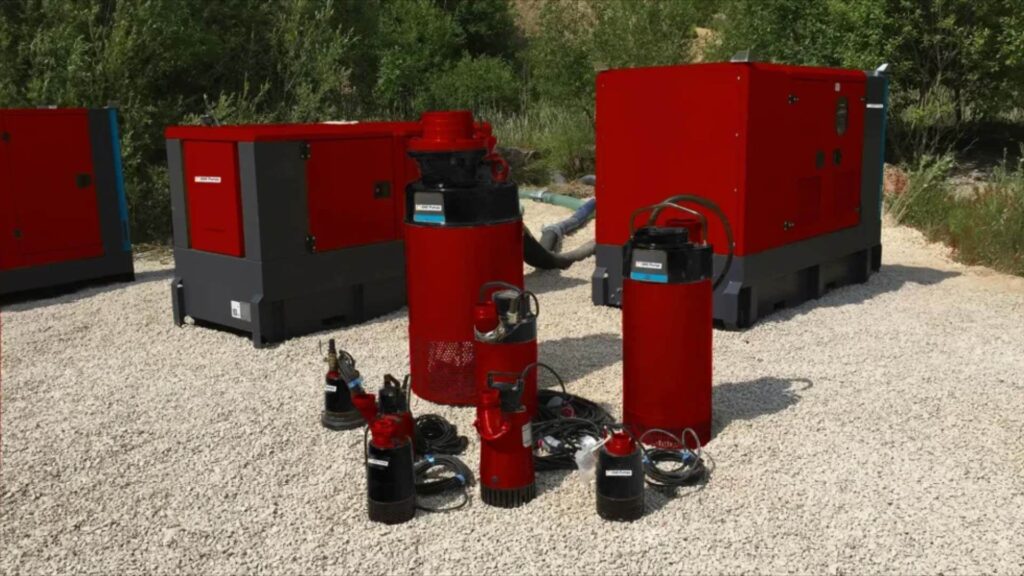
When choosing between hydraulic submersible dredge pumps and electric submersible dredge pumps, understanding their key differences is essential for selecting the right solution for your dredging project. Both types of submersible dredge pumps are designed to handle abrasive materials like sand, sludge, and slurry. Still, their performance and suitability depend on the project’s depth, material composition, and operating environment. Below are the primary differences between hydraulic and electric submersible dredge pumps:
1. Power Source
The most significant difference between hydraulic and electric submersible dredge pumps is their power source.
- Hydraulic submersible dredge pumps are powered by a hydraulic power unit (HPU) that supplies pressurized hydraulic fluid to drive the pump motor. This allows for greater flexibility in remote locations where electrical power may not be available.
- Electric submersible dredge pumps are powered by motors connected to a nearby power supply. While they are easier to install, they depend on a consistent and reliable electrical connection.
2. Depth Capability
Hydraulic submersible dredge pumps have a clear advantage when it comes to depth capability.
- Hydraulic pumps can operate at significant depths without losing performance because hydraulic power systems are less affected by increased pressure.
- Electric pumps are more limited in depth, as electrical systems face performance challenges at higher pressures and deeper water levels. This makes hydraulic submersible dredge pumps ideal for deep-sea dredging or offshore applications.
3. Handling of Abrasive Material
The ability to handle abrasive and high-density materials is a key strength of hydraulic submersible dredge pumps.
- Hydraulic submersible dredge pumps are designed to handle heavy, dense, and abrasive slurry more efficiently due to the high torque and pressure provided by hydraulic power.
- Electric submersible dredge pumps are better suited for lighter materials and lower concentrations of solids. They are effective for consistent, controlled environments but may struggle with highly abrasive or dense materials.
4. Setup Complexity
Hydraulic submersible dredge pumps require a more complex setup compared to electric pumps.
- Hydraulic pumps require a separate hydraulic power unit, high-pressure hoses, and additional support infrastructure, which increases installation time and complexity.
- Electric pumps are simpler to install and operate. They typically require only an electrical connection and a discharge line, making them more user-friendly for smaller or short-term projects.
5. Portability
Portability is another major difference between hydraulic and electric submersible dredge pumps.
- Hydraulic pumps offer greater flexibility because the hydraulic power unit can be positioned separately from the pump. This allows for easy transport and deployment in remote locations.
- Electric pumps are limited by the availability of an electrical power source, making them less adaptable to off-grid or remote dredging sites.
6. Maintenance
Maintenance requirements also differ between hydraulic and electric submersible dredge pumps.
- Hydraulic pumps require more frequent and specialized maintenance, including monitoring hydraulic fluid levels, checking for leaks, and maintaining the hydraulic power unit.
- Electric pumps have simpler maintenance needs since they lack complex hydraulic components. Routine checks of electrical connections and motor health are usually sufficient.
7. Cost
Cost considerations can influence the decision between hydraulic and electric submersible dredge pumps.
- Hydraulic submersible dredge pumps have a higher initial cost due to the need for a hydraulic power unit and more complex setup. However, their higher performance and ability to handle challenging materials often justify the investment for large-scale operations.
- Electric submersible dredge pumps have a lower upfront cost and are more cost-effective for smaller or less demanding dredging projects. However, they may lack the durability and capacity needed for more intensive operations.
When to Use Hydraulic vs. Electric Submersible Dredge Pumps
Selecting the right type of submersible dredge pump for a dredging project depends on factors such as water depth, material density, power availability, and environmental conditions. Hydraulic and electric submersible dredge pumps each have distinct advantages, making them better suited for different types of dredging applications. Understanding the ideal use cases for each type of pump can help improve operational efficiency and project outcomes.
Best Situations for Hydraulic Submersible Dredge Pumps
Hydraulic submersible dredge pumps are the preferred choice for heavy-duty and challenging dredging projects. Their high power and ability to operate in extreme environments make them well-suited for the following situations:
- Deep Water Dredging
Hydraulic submersible dredge pumps can operate at significant depths without losing efficiency. Since hydraulic power is less affected by pressure and depth compared to electric systems, these pumps are ideal for deep-sea dredging and offshore applications where depth is a limiting factor for electric pumps. - Projects Requiring High Pumping Power for Dense and Abrasive Slurry
Hydraulic submersible dredge pumps are designed to handle high concentrations of abrasive materials such as sand, gravel, and sludge. Their powerful hydraulic motors provide the necessary torque and pressure to move heavy and dense slurry, making them suitable for mining and industrial dredging operations. - Remote Locations Without Reliable Access to Electrical Power
Since hydraulic submersible dredge pumps rely on a hydraulic power unit rather than an electrical connection, they can be deployed in remote areas with limited or unavailable electrical infrastructure. This flexibility makes them ideal for mining operations, construction sites, and offshore dredging. - Environments with Hazardous Conditions (e.g., Offshore or Mining)
Hydraulic systems are less susceptible to electrical hazards, making them safer for use in potentially hazardous environments such as offshore drilling platforms, underwater mining sites, and chemical processing plants. Their ability to handle high-pressure and high-impact conditions increases their reliability in challenging settings.
Best Situations for Electric Submersible Dredge Pumps
Electric submersible dredge pumps offer a more cost-effective and user-friendly solution for less demanding dredging projects. Their simplicity and lower operational costs make them ideal for the following situations:
- Shallow Water Dredging
Electric submersible dredge pumps are effective for dredging operations in shallow waters such as rivers, lakes, and ponds. Their performance remains consistent at lower depths, making them suitable for smaller-scale dredging projects where extreme depth capability is not required. - Controlled Environments (e.g., Wastewater Treatment, Industrial Plants)
Electric submersible dredge pumps are ideal for dredging operations within controlled industrial environments, such as wastewater treatment facilities and manufacturing plants. Their consistent performance and low maintenance requirements make them well-suited for repetitive or ongoing operations in predictable settings. - Consistent Power Availability
Electric submersible dredge pumps require a stable and reliable electrical power source to operate effectively. In environments where electrical infrastructure is readily available, electric pumps provide a simple and efficient dredging solution. - Lower Budget Projects with Moderate Pumping Requirements
Electric submersible dredge pumps are economical for smaller or short-term projects due to their lower initial cost and straightforward setup. When the dredging material is less abrasive and the operating depth is shallow, electric pumps provide a cost-effective and reliable solution.
Hydraulic submersible dredge pumps excel in demanding environments with high-density materials and greater depths. In contrast, electric submersible dredge pumps are best for shallow, controlled environments where simplicity and cost-effectiveness are priorities. Choosing the right pump for the job ensures better performance, reduced downtime, and overall project success.
Factors to Consider When Choosing Between Hydraulic and Electric Submersible Dredge Pumps
When selecting the right type of submersible dredge pump for a dredging project, several key factors must be evaluated to ensure optimal performance and cost efficiency. The specific requirements of the project—such as depth, material composition, and environmental conditions—will determine whether a hydraulic submersible dredge pump or an electric submersible dredge pump is the better choice. Below are the most important factors to consider when making this decision:
Project Depth
The depth at which the dredging operation will take place is a critical factor when choosing between hydraulic and electric submersible dredge pumps.
- Hydraulic submersible dredge pumps are better suited for deep-water operations. Their hydraulic power is less affected by increased depth and pressure, allowing them to maintain high performance even at significant depths. This makes them ideal for offshore dredging, deep-sea mining, and underwater construction.
- Electric submersible dredge pumps are more effective for shallow water projects. However, their performance tends to decline at greater depths due to the limitations of electrical power under high pressure. Electric pumps are often sufficient for rivers, lakes, and industrial ponds,
Material Composition
The type of material being dredged impacts the efficiency and longevity of the pump.
- Hydraulic submersible dredge pumps are specifically designed to handle high-density and abrasive materials such as sand, gravel, and sludge. Their high torque and pressure capabilities make them ideal for heavy-duty dredging projects that involve dense or coarse materials.
- Electric submersible dredge pumps are more effective for lighter, less abrasive materials. They work well for handling sediment and slurry with a lower solids content, making them suitable for industrial wastewater and environmental cleanup projects.
Portability Requirements
Portability is essential for dredging operations in remote or difficult-to-access locations.
- Hydraulic submersible dredge pumps offer greater flexibility because they are powered by a portable hydraulic power unit (HPU). The HPU can be positioned away from the dredging site, making it easier to transport and set up in challenging environments such as remote mining sites or offshore platforms.
- Electric submersible dredge pumps require a stable and nearby electrical connection, which limits their portability. They are better suited for fixed installations or locations with existing electrical infrastructure.
Environmental Concerns
Environmental impact and safety considerations also play a significant role in pump selection.
- Hydraulic submersible dredge pumps use hydraulic fluid to operate, which introduces the potential for leaks or spills. In sensitive environments, such as marine habitats or protected ecosystems, this can pose environmental risks.
- Electric submersible dredge pumps are more environmentally friendly because they don’t rely on hydraulic fluid. This reduces the risk of contamination and makes them a safer choice for environmentally sensitive dredging projects.
Budget and Operational Costs
Cost considerations can influence the decision between hydraulic and electric submersible dredge pumps.
- Hydraulic submersible dredge pumps have higher initial costs due to the need for a separate hydraulic power unit and more complex setup. However, their higher efficiency and ability to handle demanding materials often lead to lower long-term operational costs for large-scale or high-intensity projects.
- Electric submersible dredge pumps require a lower initial investment and are simpler to set up, making them more cost-effective for smaller or short-term projects. However, they may not provide the same level of performance or durability as hydraulic pumps in more challenging conditions.
Conclusion
When it comes to selecting the right submersible dredge pump for a dredging project, understanding the differences between hydraulic and electric models is essential for maximizing efficiency and performance. Hydraulic submersible dredge pumps offer superior power and the ability to handle dense, abrasive materials at greater depths, making them ideal for remote and high-demand applications such as offshore dredging and mining. On the other hand, electric submersible dredge pumps provide a simpler, more cost-effective solution for shallow water and controlled environments where consistent power is available. The right choice depends on factors such as project depth, material composition, portability requirements, environmental impact, and budget considerations.
Both hydraulic and electric submersible dredge pumps have their strengths, and selecting the most suitable option will ultimately improve project efficiency and reduce operational costs. For deep water and high-density slurry, hydraulic pumps deliver unmatched performance, while electric pumps offer reliability and ease of use for less complex applications. By carefully evaluating project needs and environmental conditions, operators can choose the most effective submersible dredge pump to ensure long-term success and operational efficiency.
